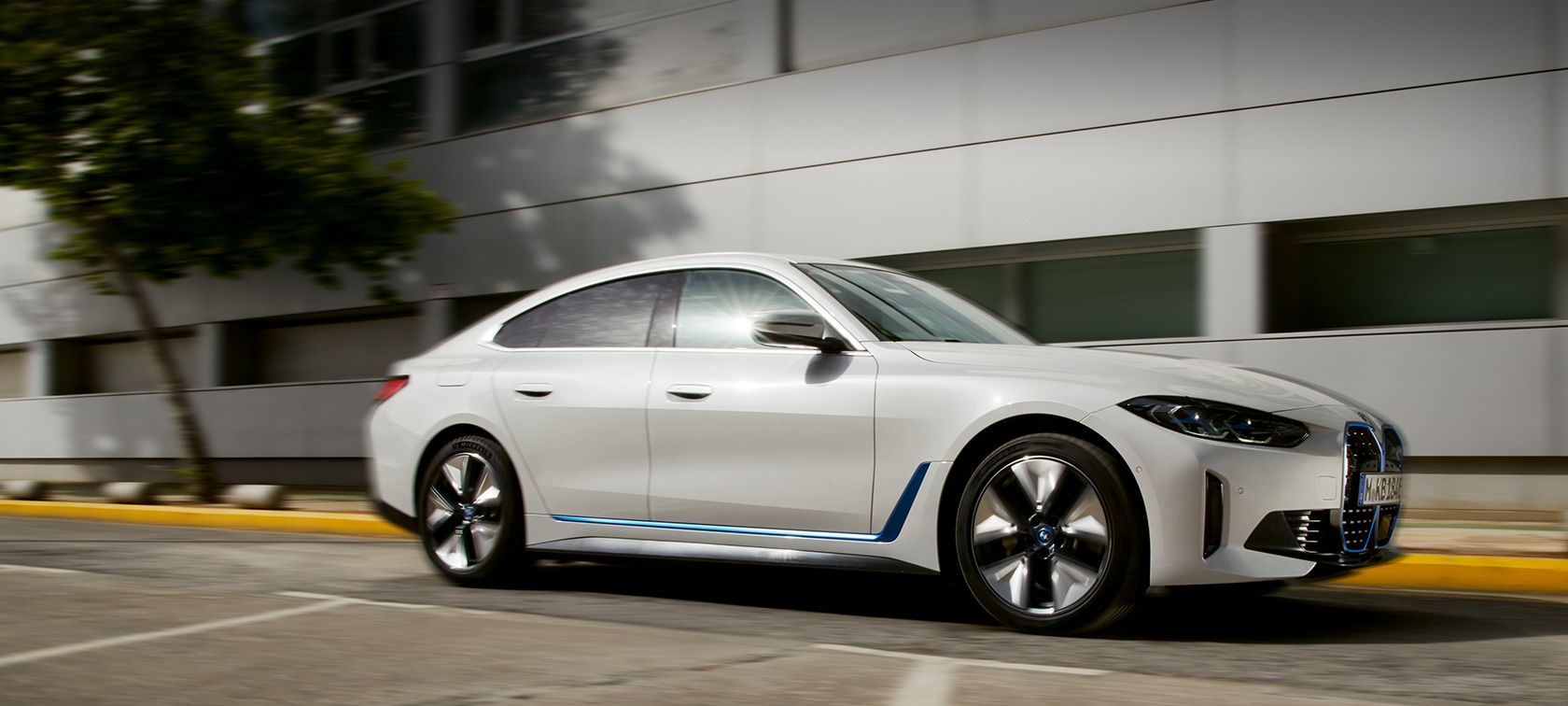TECHNICAL DATA OF THE BMW i4.
|
|
|
|---|---|
|
Powertrain type |
Electric |
|
Power in kW (hp) |
210 (286) |
|
Torque in Nm |
400 |
|
Transmission |
1-speed, automatic |
|
Drivetrain |
Rear-wheel drive |
|
|
|
|---|---|
|
(Nominal) power/30-minutes-power in kW (hp) |
210 (286) / 85 (114) |
|
(Nominal) torque in Nm |
400 |
|
|
|
|---|---|
|
Acceleration 0–100 km/h in s |
6 |
|
Electric top speed in km/h |
190 |
|
Energy consumption, combined WLTP in kWh/100 km |
18.6 - 15.1 |
|---|---|
|
Electric range, WLTP in km 2 |
406 - 500 |
|
Battery capacity in kWh |
67.1 |
|---|---|
|
Maximum charging power AC in kW |
11 (-) |
|
Minimum charging time AC 0–100 % state of charge in h |
7:00 |
|
Maximum charging power DC in kW |
180 |
|
Minimum charging time DC 10 – 80 % state of charge in h |
0:41 |
|
|
|
|---|---|
|
4,783 mm
|
|
|
1,852 mm
|
|
|
1,448 mm
|
|
|
Length in mm |
4,783 |
|
Width in mm |
1,852 |
|
Height in mm |
1,448 |
|
Width incl. mirrors (driver / passenger side) in mm |
2,073 (1,042 / 1,031) |
|
Wheelbase in mm |
2,856 |
|
Vehicle curb weight in kg 4 |
2,070 |
|
Permissible gross weight in kg |
2,550 |
|
Payload in kg |
555 |
|
Optionally delivered with support for trailer load, braked, up to 12% / towbar download in kg 5 |
1,600 / 75 |
|
Luggage capacity in l |
470 - 1,290 |
Consumption and CO2 emissions.
BMW i4 eDrive40 M Sport[1]:
Battery consumption in km/kWh: 4.5
CO2 emissions in g/km (combined): 0
The values of the vehicles labelled with [1] are preliminary.
The values of fuel consumptions, CO2 emissions and energy consumptions shown were determined according to the European Regulation (EC) 715/2007 in the version applicable at the time of type approval. The figures refer to a vehicle with basic configuration in Germany and the range shown considers optional equipment and the different size of wheels and tires available on the selected model.
The CO2 efficiency specifications are determined according to Directive 1999/94/EC and the European Regulation in its current version applicable. The values shown are based on the fuel consumption, CO2 values and energy consumptions according to the NEDC cycle for the classification.
For further information about the official fuel consumption and the specific CO2 emission of new passenger cars can be taken out of the „handbook of fuel consumption, the CO2 emission and power consumption of new passenger cars“, which is available at all selling points and at https://www.dat.de/angebote/verlagsprodukte/leitfaden-kraftstoffverbrauch.html

